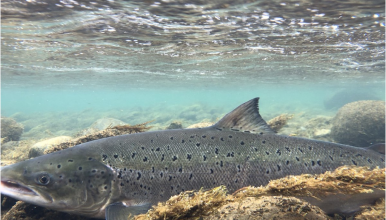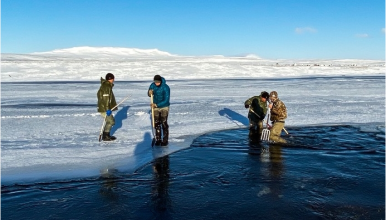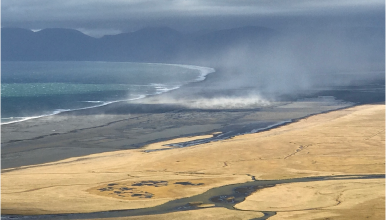Increasing Salmon Stocks through use of Fish Ladders
The main purpose of a ladder is to enable salmon to reach parts of a river that were previously inaccessible to them. Most often, it is a waterfall that creates the obstruction and the ladder provides a natural passage for the fish past that barrier.
The opening up for the salmon of previously closed parts of their river is beneficial as it increases the breeding length of the river. This is a gradual process and, in the years before a ladder is built, we will physically move salmon above the waterfall to encourage the fish to return instinctively to spawn in that part of the river.
The first ladder on the Selá was built in 1970. The effect was to increase the length of river populated by salmon from 9km to 26km. The average salmon catch over a 20 year period increased from 200 fish per year to 1800 fish per year. It took 20 years for the natural stock to occupy the new river and the annual catch number is still rising. A further ladder was added to the Selá in 2011 and today the salmon can populate 36km of river.
Strengur Angling Club and the Six Rivers Project have been responsible for the construction of a number of fish ladders in North East Iceland and there are plans to build more in the future. Initially concrete was used but in recent years the Six Rivers Project has improved the process by cutting ladders out of bedrock creating a more natural environment for the salmon.
The opening up for the salmon of previously closed parts of their river is beneficial as it increases the breeding length of the river. This is a gradual process and, in the years before a ladder is built, we will physically move salmon above the waterfall to encourage the fish to return instinctively to spawn in that part of the river.
The first ladder on the Selá was built in 1970. The effect was to increase the length of river populated by salmon from 9km to 26km. The average salmon catch over a 20 year period increased from 200 fish per year to 1800 fish per year. It took 20 years for the natural stock to occupy the new river and the annual catch number is still rising. A further ladder was added to the Selá in 2011 and today the salmon can populate 36km of river.
Strengur Angling Club and the Six Rivers Project have been responsible for the construction of a number of fish ladders in North East Iceland and there are plans to build more in the future. Initially concrete was used but in recent years the Six Rivers Project has improved the process by cutting ladders out of bedrock creating a more natural environment for the salmon.



